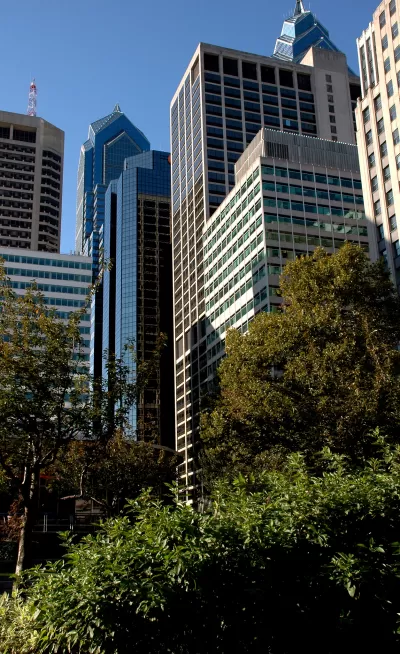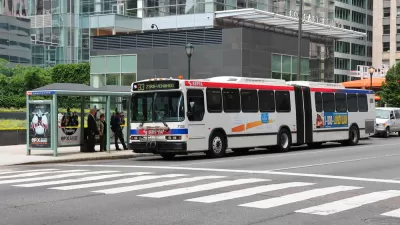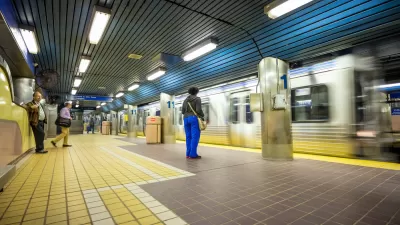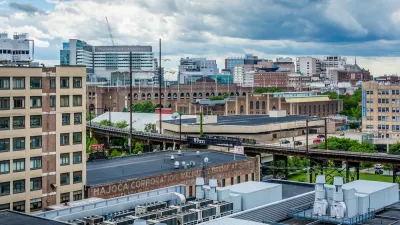Surrounded on all sides by glassy, modern towers, Philly's West Market Street has lacked the sort of attractions that have brought downtown workers to neighboring streets.

Philadelphia’s "most boring street," according to Philadelphia Inquirer architecture critic Inga Saffron, is overdue for needed improvements. West Market Street was "designed to be dull," writes Saffron—modeled on the canyon of financial towers along Park Avenue in Manhattan. However, building owners surrounding the street are beginning to see the potential benefits of adding amenities such as restaurants and retail outlets. Unfortunately, these improvements are proving to be a mixed-bag, with some converting formerly public space into unfriendly walled off private spaces.
At 1601 Market and Independence Blue Cross, the new owners have recently walled off their arcades behind glass. In theory, sacrificing these slivers of public space could be a good thing if it helped attract more interesting retailers to the street.
But 1601 simply increased its rentable square-footage without giving anything meaningful back to the public. Instead of finding an interesting tenant, it welcomed back the same boring bank at 16th Street, one of the city's most heavily trafficked pedestrian corners.
While these attempts to bring amenities to the neighborhood are in their infancy, neighborhood enthusiasts find additional hope in the arrival of new residential apartment buildings along West Market, which may yet breath new life into the moribund street.
FULL STORY: Changing Skyline: Can Philadelphia's most boring street get energized with new retail?

Trump Administration Could Effectively End Housing Voucher Program
Federal officials are eyeing major cuts to the Section 8 program that helps millions of low-income households pay rent.

Planetizen Federal Action Tracker
A weekly monitor of how Trump’s orders and actions are impacting planners and planning in America.

Ken Jennings Launches Transit Web Series
The Jeopardy champ wants you to ride public transit.

California Invests Additional $5M in Electric School Buses
The state wants to electrify all of its school bus fleets by 2035.

Austin Launches $2M Homelessness Prevention Fund
A new grant program from the city’s Homeless Strategy Office will fund rental assistance and supportive services.

Alabama School Forestry Initiative Brings Trees to Schoolyards
Trees can improve physical and mental health for students and commnity members.
Urban Design for Planners 1: Software Tools
This six-course series explores essential urban design concepts using open source software and equips planners with the tools they need to participate fully in the urban design process.
Planning for Universal Design
Learn the tools for implementing Universal Design in planning regulations.
Ada County Highway District
Clanton & Associates, Inc.
Jessamine County Fiscal Court
Institute for Housing and Urban Development Studies (IHS)
City of Grandview
Harvard GSD Executive Education
Toledo-Lucas County Plan Commissions
Salt Lake City
NYU Wagner Graduate School of Public Service





























